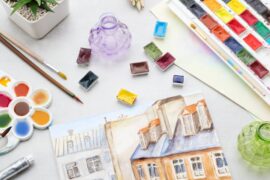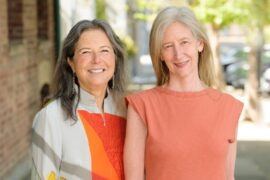It was nice to see so many of you at the Baltimore Museum of Art for the launch of Susan Magsamen and Ivy Ross’s fascinating new book, Your Brain on Art: How the Arts Transform Us.
Your Brain on Art: How the Arts Transform Us is an important, groundbreaking book. It will shift how you think about the arts.
The arts – which includes visual arts, crafts, music, dancing, theater, storytelling, and all other forms of creative expression – have been pushed aside as we believe we need the time and budget for more pressing activities and issues. Academics and sports have pushed them out of schools. Community budget cutbacks have eliminated festivals and art gatherings, and cultural institutions have scrapped some programming. Our busy lives mean that we engage more in transactional and structured activities, and leave less time to just “be” – to wonder, wander, be curious and creative. Co-author Ivy Ross describes this as “doing something without a prescribed outcome.”
But research, especially in the last 10 years, is scientifically proving that the arts are an integral part of our health and well-being – both individually and for communities. Making art for as little as forty-five minutes reduces the stress hormone cortisol, no matter your skill level or experience. On a larger scale, the arts build community and create social fabric. Arts and science are linked together in ways that we are still figuring out.
At the book launch, Susan Magsamen talked about our need to flourish. Most self-help books and coaches help us to cope with life, but Susan believes that most of us want to go beyond that to enriching our lives and flourishing. Appreciation and participation in the arts helps us develop curiosity, wonder and awe, have a greater tolerance for taking risks, and express ourselves. We go beyond coping to flourishing.
The book and the panelists at the book launch threw out one interesting fact after another.
Did you know…
Art has many health benefits: A few of many examples – dancing can alleviate Parkinson’s symptoms, singing helps Alzheimer’s patients with memory, and exposing medical school students to activities in museums increases their empathy toward patients. In Israel, a cancer hospital designed with sensory experiences in mind helps patients heal faster.
It’s healthy for our brains: Being curious and creative helps our brains build synaptic neural pathways, in ways that memorizing and rote memory activity do not.
Perfectionism in our society has created anxiety. Our culture has become one of judgment: good art vs. bad art. But studies are showing that you can reap the same benefits from participating no matter whether you are good at what you try or not. And observing art is equally beneficial – people leave theaters happier and healthier than when they came in.
Corporations are increasingly looking for people who are innovative and can think outside the box – visionaries and problem solvers. But schools are removing the classes that teach creativity. In “checking all the boxes” of courses and activities to get into good schools, we are reducing the time to take classes for pure enjoyment, for open-ended play and exploration.
Has this made you curious for more? You can get the book on Amazon or at The Ivy Bookshop in Baltimore.




